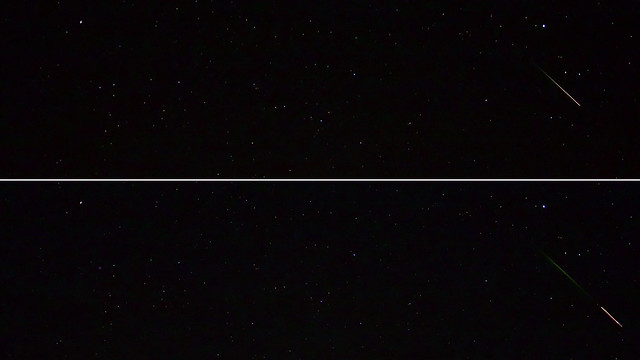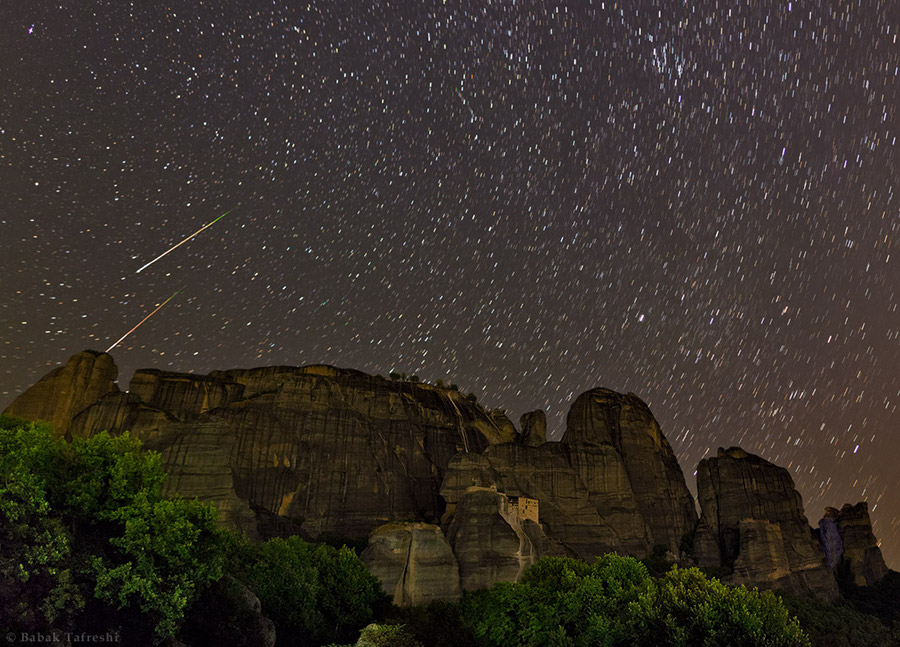Meteors change color as they come down. I've never noticed this before. I looked up a few other pictures and they all seem to have the same color profile - green on the top changing to pink. The American Meteor Society says "The majority of light from a fireball radiates from a compact cloud of material immediately surrounding the meteoroid or closely trailing it. 95% of this cloud consists of atoms from the surrounding atmosphere" And I know meteors occur in the same altitude regime that auroras occur. I therefore postulate that the green top end is the molecular oxygen emission changing to the pink nitrogen emission at the 100km cutoff level. So I suppose now I can actually locate a meteor in Lat/Long just from a picture, provided the meteor was bright enough to show color.
All's quiet on the sprites front. Just waiting for the right storm.
13Aug2013 edit: Nope, that's not quite right...
I took this Sunday night from the Gulfstream:

It's a meteor in two consecutive frames with a one second cadence. And look, the part of the trail that was white in the first frame turns green in the second. I mean, duh. The green is not a prompt emission, it takes about a second after the oxygen atom is excited before it spits out a green photon. The meteor comes through and excites the oxygen (top frame), then a second later the oxygen de-excites and spits out some green (bottom frame). So looking at meteor images, the point where the trace turns from green to pinkish white is not the 100km level, it's just where the meteor was when the exposure began, and the green part is where the meteor was before the exposure began, just now emitting green. It's actually a pretty neat illustration of a forbidden transition, and I'll probably use it as an example in the future.
I should know these things.

No comments:
Post a Comment